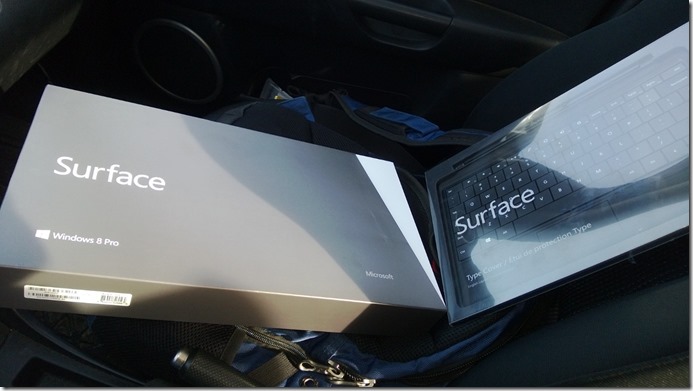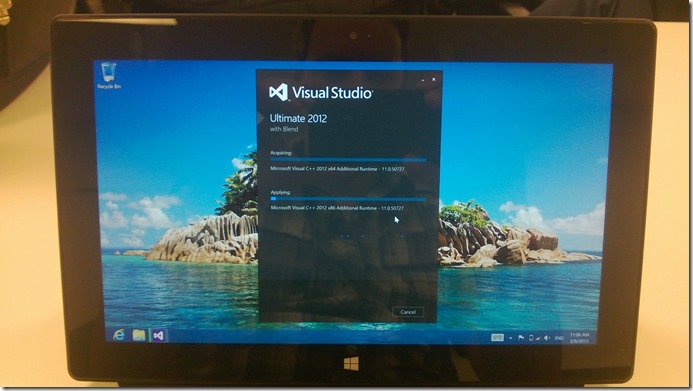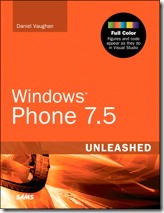My Surface Pro Review: A Developer’s Perspective
Before I start this review, I would like to thank my employer, Mirego, for offering me a trade-in of my Surface RT for a Surface Pro! As a technology lover, it was impossible to say no.
This week, I called a couple of Future Shops (I live in Montreal, Canada), Best Buys and Staples. After multiple calls to Staples, I was never able to talk with a human, they are apparently too busy. Future Shop (sister company of Best Buy) answered me, but said that they didn’t have any info concerning the Saturday availability. However, there was a nice lady on Wednesday who took my name over the phone at Best Buy Marché Central to let me know the minute they were going to receive the Surface Pro. I didn’t hold my breath. However, Friday night at 8:50, she called to give me the news that the truck didn’t have any Surface Pros. I was kind of disappointed sine earlier in the week, Best Buy announced that all the Canadian stores would have some. She told me that Best Buy at Anjou would have some. I wasn’t about to start holding my breath…
Saturday morning, I made sure to arrive 30 minutes before the store opening. I was not sure if I would have face a line up or not. Luckily, the line up 10 minutes before the opening looked like this:
The security guard saw me taking a picture and asked me why I was taking a picture and why I was so early. It’s the Surface Pro launch my friend!
9:00 arrived and I went straight to the computer section. I was so happy when I saw this display:
The salesman was friendly enough and we chatted for a while. The employees were looking forward to the Surface Pro.
At the Microsoft BUILD conference, I received the touch keyboard with my Surface RT, but I was not a huge fan of the keyboard. This time, I selected the type keyboard. One thousand three hundred and one dollars (with taxes) later, I was out with the 128 GB version:
When I first turned on the Surface Pro and saw the Start menu, my reaction was that it has an amazing screen. It is sharp and crisp (thanks to the HD resolution). I launched a whole bunch of apps to see how fast and fluid the Surface Pro is. To give you a better idea, here is a video that my friend Matthieu took:
Convinced? I am.
My second test was the type keyboard. Short review: it is night and day compared to the touch keyboard. I love it. It feels like a regular keyboard. I highly suggest the type keyboard, especially for developers.
The hidden gem of the Surface Pro is the Pen. I launched the OneNote app and I tried it. It works without lag and the eraser works well too. It will definitively be a great tool for taking notes.
Why the Surface Pro over a plethora of tablets iPad/Android? Here’s the answer:
The perfect portable solution for a developer is right here. As a bonus, we are also able to use Outlook, Live Writer, Photoshop and so on.
Comparison
Last summer, I received a prototype Ultrabook from Intel. Here are the specs:
Before I got a laptop with a touch screen, I had the mentality that using greasy fingers on the screen was a terrible idea. Sorry, I was wrong. It is such a natural way to interact with a computer in some situations especially when reading. (Expect Apple to update their MacBook with touch screen this year.) This Ultrabook with a Core i7-3667U is fast and fluid. It is a good contestant to fight with a Surface Pro with these specs:
On the load time test, surprisingly, the Surface Pro is the clear winner:
It looks like a 10 seconds boot time for the Surface! This is cool, but nowadays we don’t have to turn off a computer all the time. Here is a normal test of launching Visual Studio 2012 (with Update 2 on both computers) and launching the debugger with the Windows 8 emulator:
With the Surface Pro we have almost the time to breath an extra second while waiting.
Conclusion
Earlier this week, the Surface Pro received mixed reviews over the Internet. I was not surprised and in fact I didn’t care that much. Yes, the battery life of the Surface Pro is not stellar, but in real life, I’m not travelling around the world every day without a power charge for an entire day and I’m pretty sure it is the same case with the majority of users. The Surface Pro is an amazing device or whatever you’d like to call it. I’ll read, play and develop with it.
Congratulations to Microsoft and especially to the Surface team.
ArchieCoder







